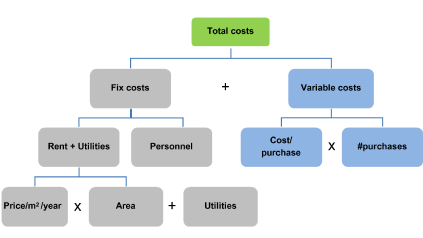How the big players solve big problems
By Robert Garran
How to solve problems like McKinsey and Company without paying a squillion dollars
What are the secrets of success for McKinsey and Company and the other big business consulting firms, and can we lesser mortals hope to match them?
One feature of their business model is difficult to replicate—they’re willing to pay top dollar to smart young graduates with top university grades who are happy to work 80 hour weeks and abandon any notion of a work-life balance.
There’s another feature of their work, though, that is easier to match: they have excellent tools and techniques that help them work smarter.
The big firms try to keep these tools and techniques closely guarded, but even so, there are many useful clues out there if you know where to look.
One place to start is to search on Amazon for books with McKinsey in the title. Two of the best I’ve read are the The McKinsey Way, by Ethan Rasial, published in 1999, and The McKinsey Mind, by Ethan Rasial and Paul Friga, from 2001.
Rasial is a former McKinsey consultant, and the fact that these books made it onto the market suggests he’s steered the fine line between giving readers useful advice without nicking McKinsey’s intellectual property—which you can be sure they’d protect vigorously.
They’re both well worth reading. As the authors put it, The McKinsey Way is more descriptive than prescriptive, while The McKinsey Mind shows you how to apply McKinsey techniques.
A couple of basic tools discussed in The McKinsey Mind are logic trees and the concept of MECE—pronounced mee-see—which stands for Mutually Exclusive and Collectively Exhaustive.
Logic trees and MECE are simple ideas, but take a bit of practice to use well.
A logic tree is a graphic representation of the logic of a problem, argument or solution. They’re similar to mind maps, with the difference that whereas mind maps may be intuitive and relatively unstructured, a logic tree is meant to structure your argument or discussion in a way that illuminates the logical connections between the parts.

Example of a MECE Diagram
The second idea, MECE, is an important tool for analysing a problem, including in developing logic trees. When you’re listing all the contributing factors behind a problem, your analysis of the problem will usually be helped if you can list the factors without overlap—that is, they’re mutually exclusive (that’s the ME). Also, you want the list to include all the relevant factors, that is, to be collectively exhaustive (CE).
According to Rasial and Friga, MECE is a foundational tool in McKinsey; it highlights the importance of structure in problem-solving. One former McKinsey consultant summed up his experience with the firm this way: ‘Structure, structure, structure, MECE, MECE, MECE’.
Here’s an article that explains logic trees and MECE. (Note that it uses the notion of issue trees rather than logic trees—I would say an issue tree is a type of logic tree.)
Like any tools, logic trees and MECE have limitations. Sometimes when scoping a problem, it’s useful to brainstorm the issues in an open-ended way, without trying, at first, to draw the logical connections. For that purpose a mind map is a useful tool, rather than a logic tree—though you might later refine the problem using a logic tree.
And MECE isn’t always the best rule to follow in teasing out the elements of a problem. Sometimes the overlaps and interconnections are a central feature of the problem, or the solution, and adopting the MECE principle will hinder your reaching a solution. Critics have pointed to other problems too, such as Tim van Gelder’s blogpost here. Even so, and noting the shortcomings, I’ve found MECE is a useful rule of thumb when you’re constructing logic trees.
Business consulting, at the end of the day, is often based on smart use of tools such as logic trees and MECE. The McKinsey Mind and The McKinsey Way provide illuminating discussions of how these tools and others like them are applied in practice.
Contact us at service@ethoscrs.com.au if you require a customised a program for your organisation. Ethos CRS provides most of the policy programs for the Australian Public Service Commission (APSC) for policy programs through their National learning and development calendar.
